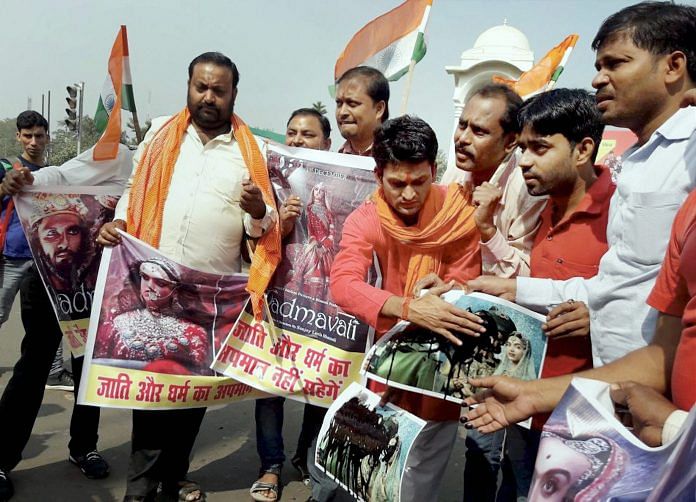The debate around the historical accuracy of fictional cinema like Sanjay Leela Bhansali’s upcoming film Padmavati raises critical questions, once again, about barring art for hurting ‘public sentiment’. Once approved by the censor board, must there be any other tests that movies need to pass? ThePrint asks a panel of experts:
Should concerns of a particular community come in the way of Padmavati’s release?
Every Chaitra Ekadasi – Krishna paksh, thousands gather for the first Saka that happened in Chittorgarh, in Samwat 1360. As the summer heat rises with the onset of the month of Chaitra so does the passion of the crowds. People come regularly to pay their respects, and remember the sacrifice of Rani Padmini, the epitome of beauty in Rajasthani folk history. It is important to recollect all this in the context of Chaitra and Samwat because in popular perceptions such events are only recorded according to the traditional calendar. The countryside lives by the Indian calendar, and records memories in a popular idiom.
There is a history that is in the popular circulation. The pedestrian memory of events, personalities, triumphs and tragedies, have a resonance that is far deeper than is currently understood by those who, for example, live by the Gregorian calendar.
It is this circulation of popular history that draws thousands to the Johar Kund in Chittorgarh, despite the searing heat of Chaitra. And in popular history, Rani Padmini led the first mass self-immolation, and thus the remembrance every Samwat on the same day. Rajputs are, of course, the predominant attendees, but not the sole ones. Not by any stretch of imagination.
Here are other sharp perspectives on the Padmavati controversy:
Shekhar Suman: film and television actor
R. S. Khangarot: senior historian and Principal, Agrawal PG College Jaipur
Rana Safvi: author, ‘Tales from the Quran and Hadith’
Vijay Tiwari: spokesperson, Vishwa Hindu Parishad
Samarth Mahajan: creative director, Kahaani Wale
Rani Padmini’s sacrifice elevated her to the status of a goddess in popular perceptions. And hence the veneration by all, and not just by her fellow Rajputs.
The anger at her perceived visualisation in the forthcoming Bollywood film Padmavati has to be placed in the context of popular memory, public history, and of course, identity. Malik Mohammad Jayasi’s Padmavati doesn’t feature in popular discourse, only Rani Padmini does, the one who performed Johar in Samwat 1360 on Chaitra Ekadasi – Krishna paksh. And that memory cannot countenance any contact between her and Allaudin Khilji the invader — even if the visualisation is his dream. He is a particularly loathsome character in public memory. His siege of Ranthambor continues of be recounted in Rajasthani ballads, and defaced temples outside Jaisalmer are blamed on him.
Manvendra Singh is a BJP MLA



